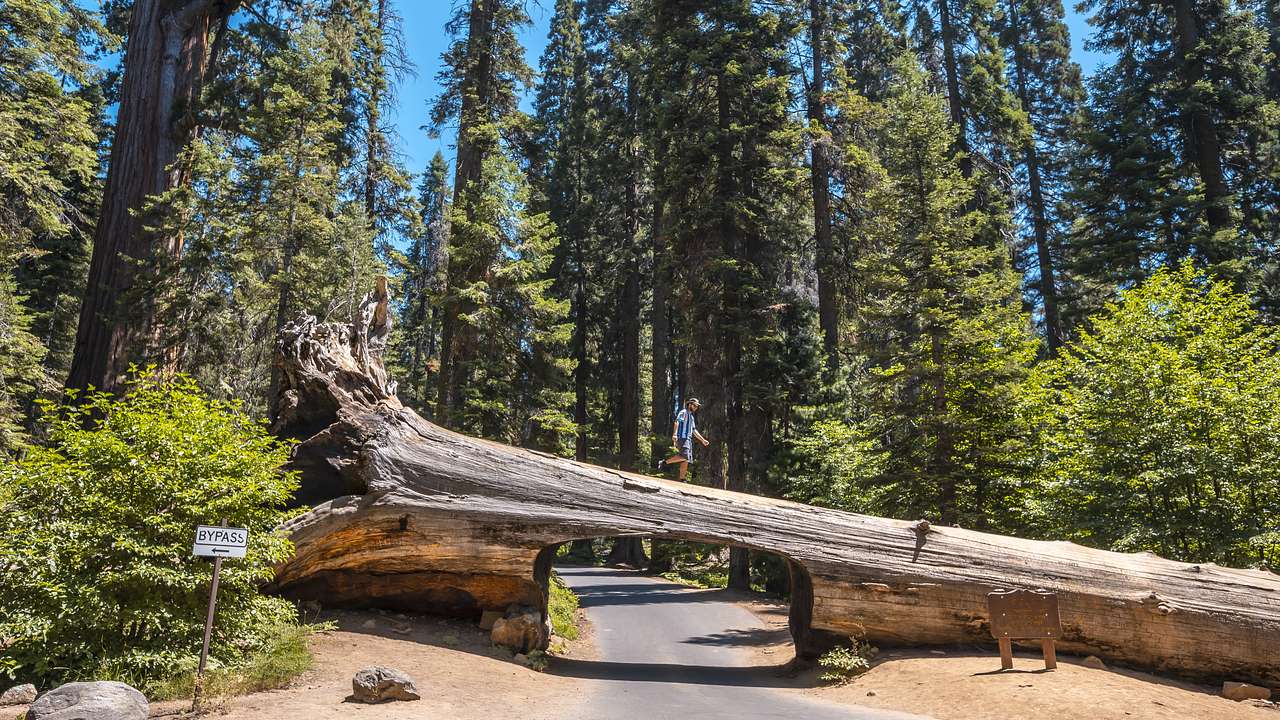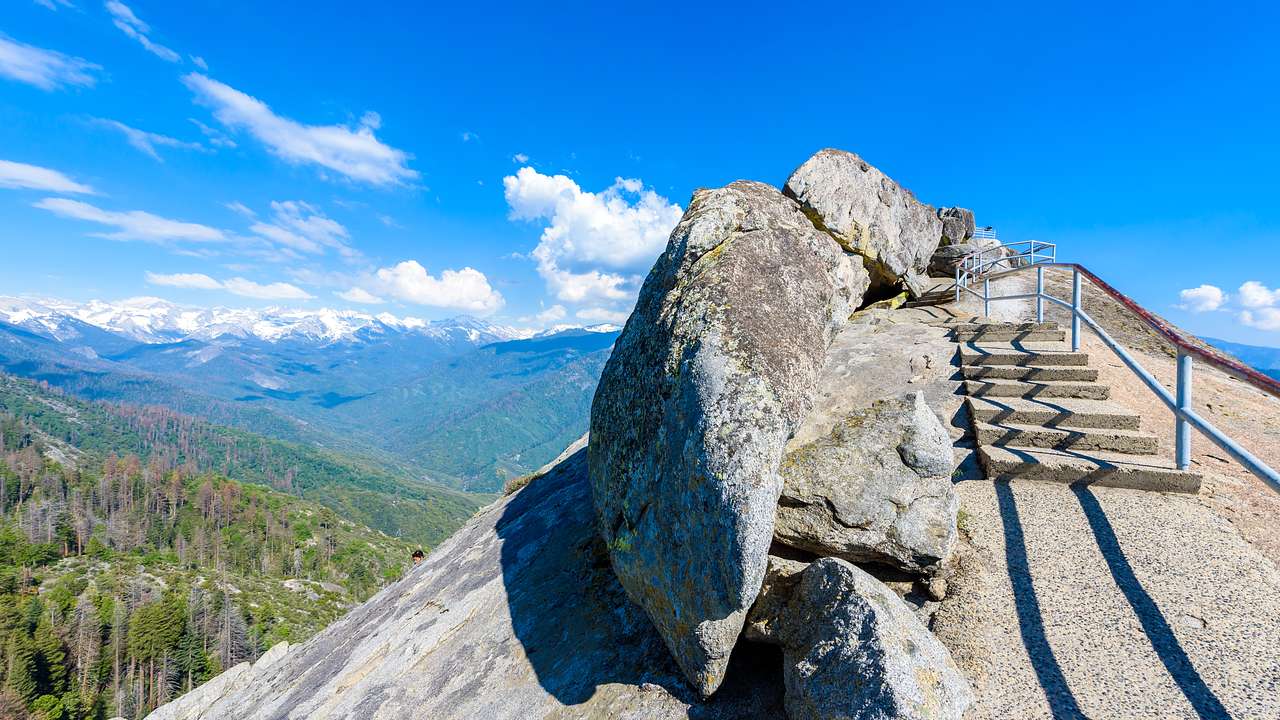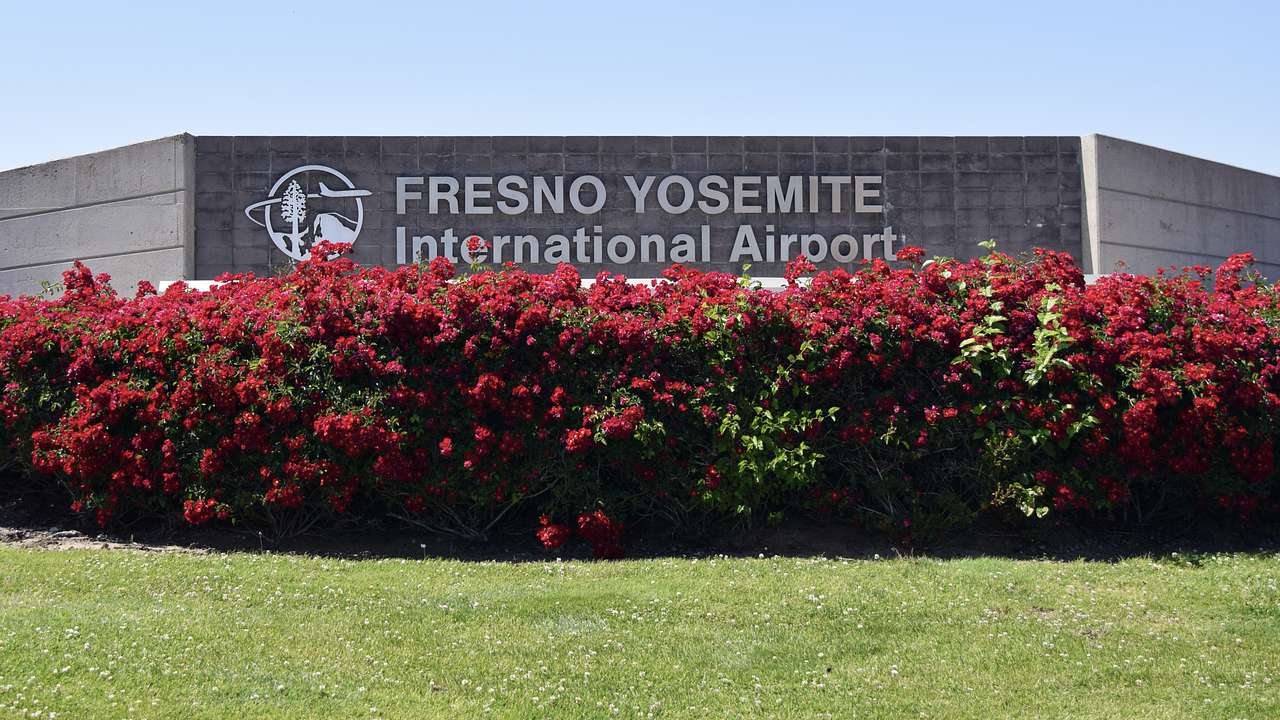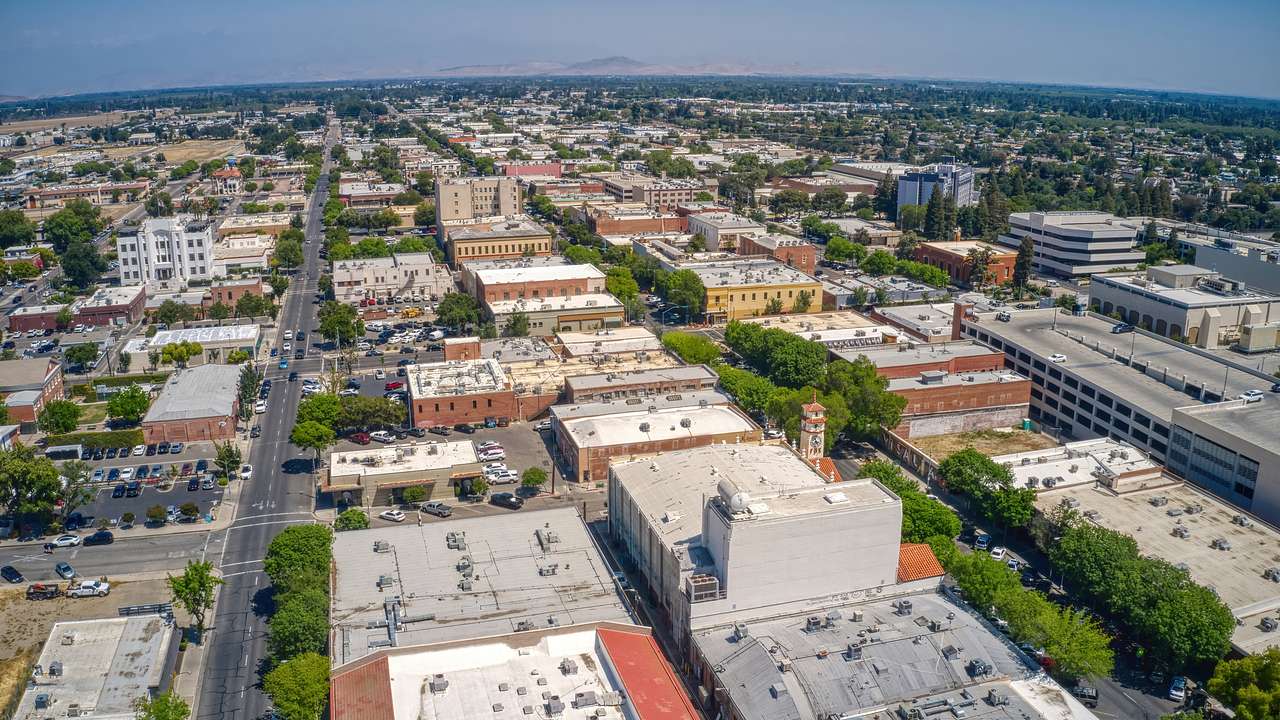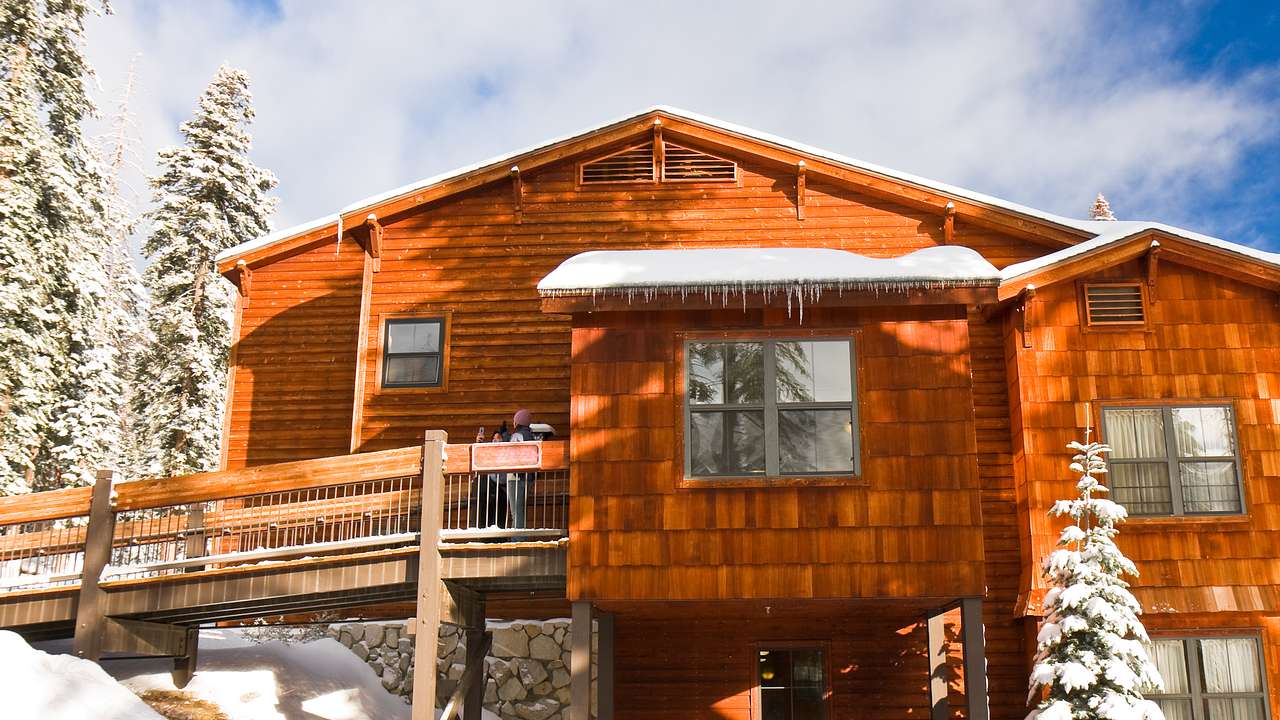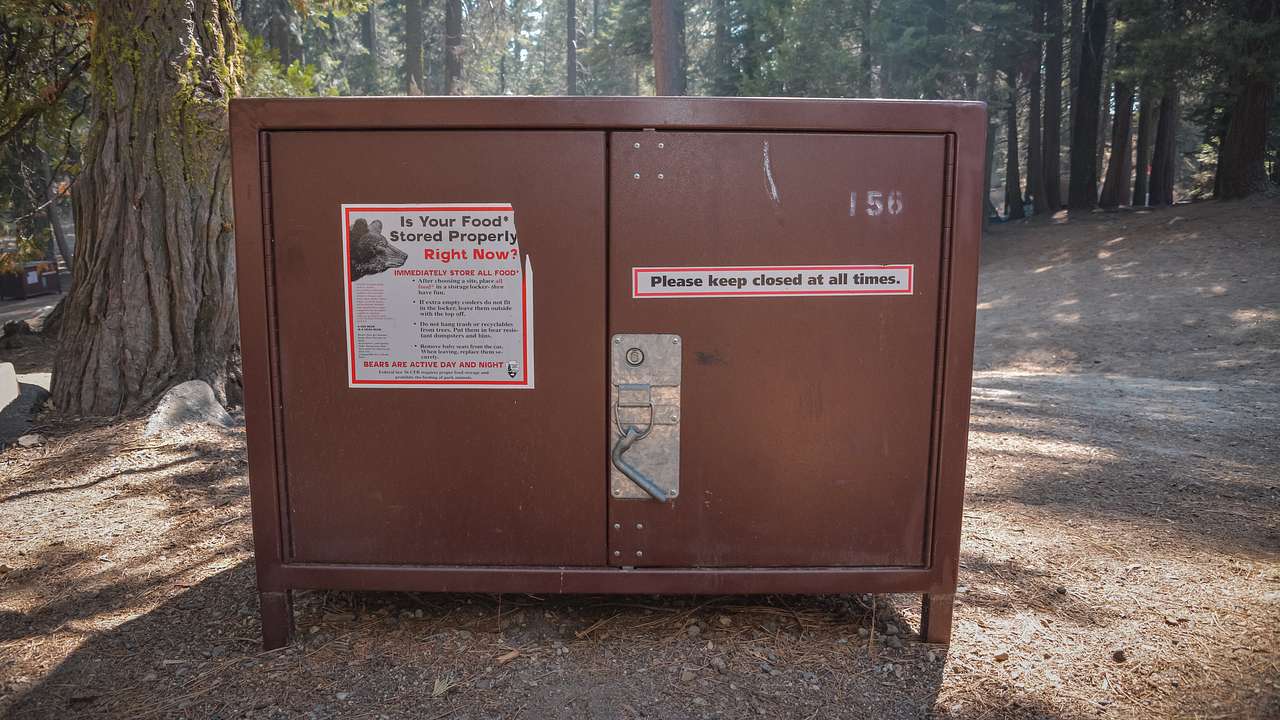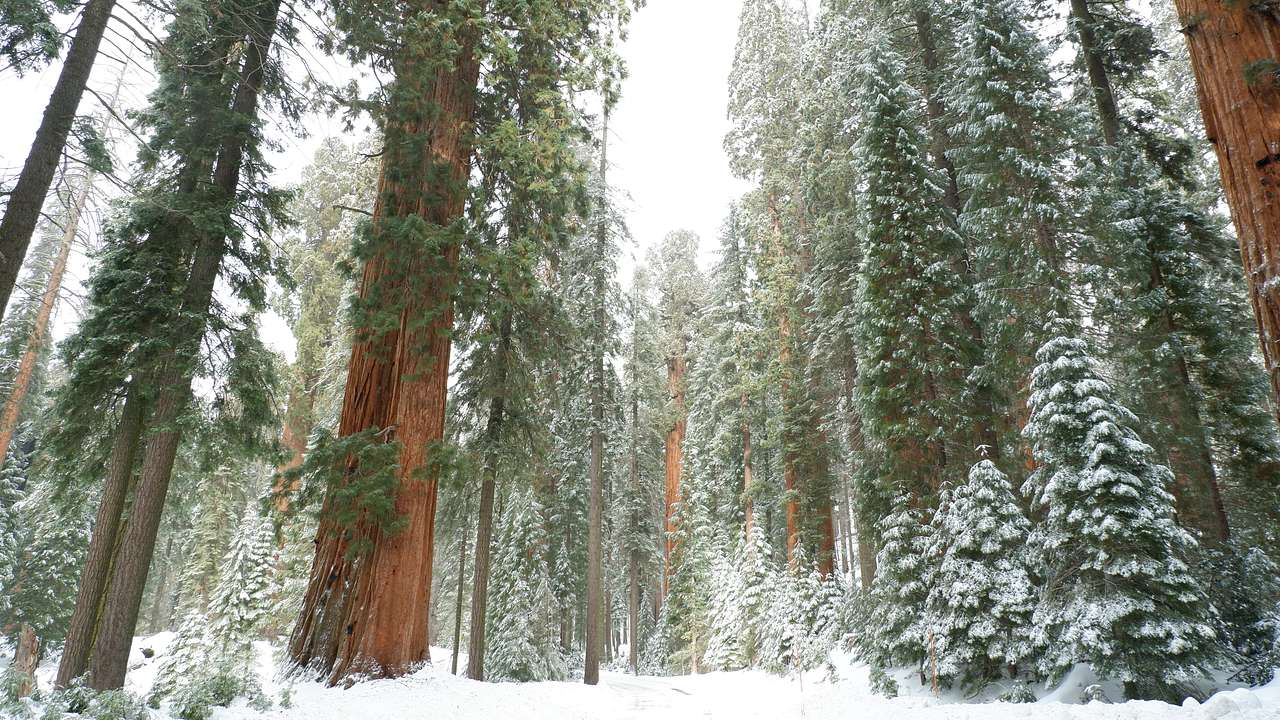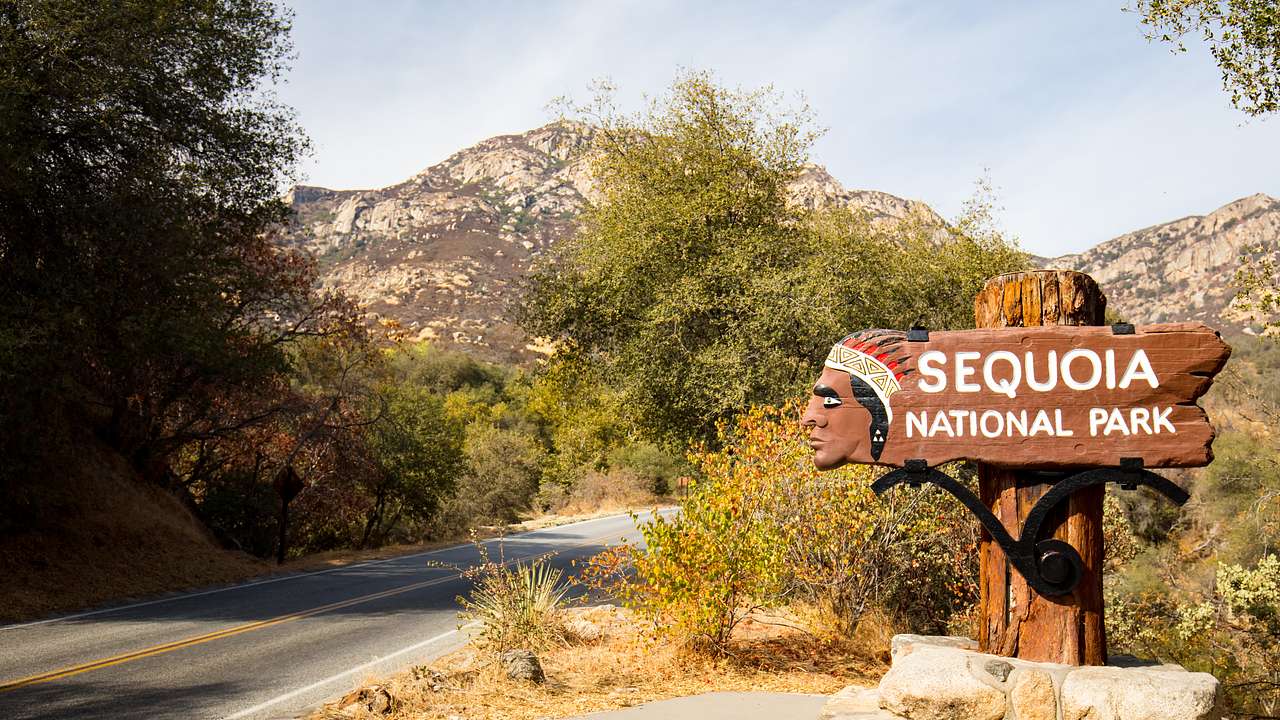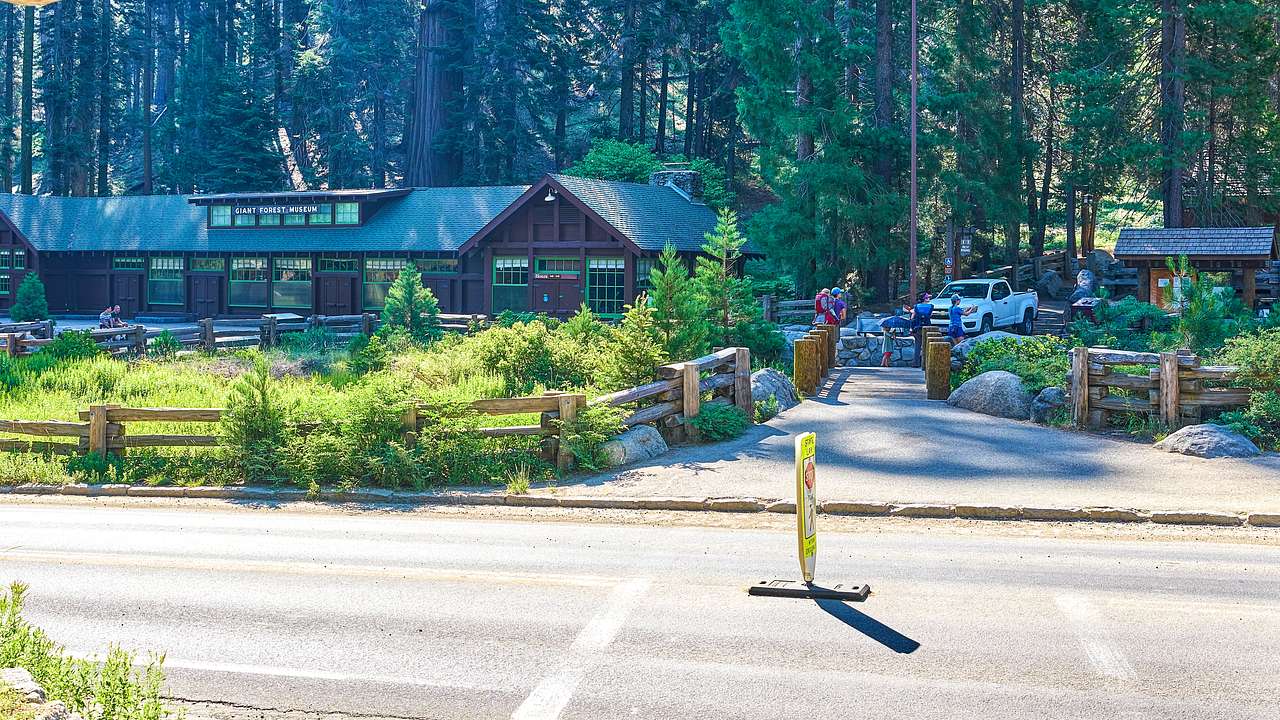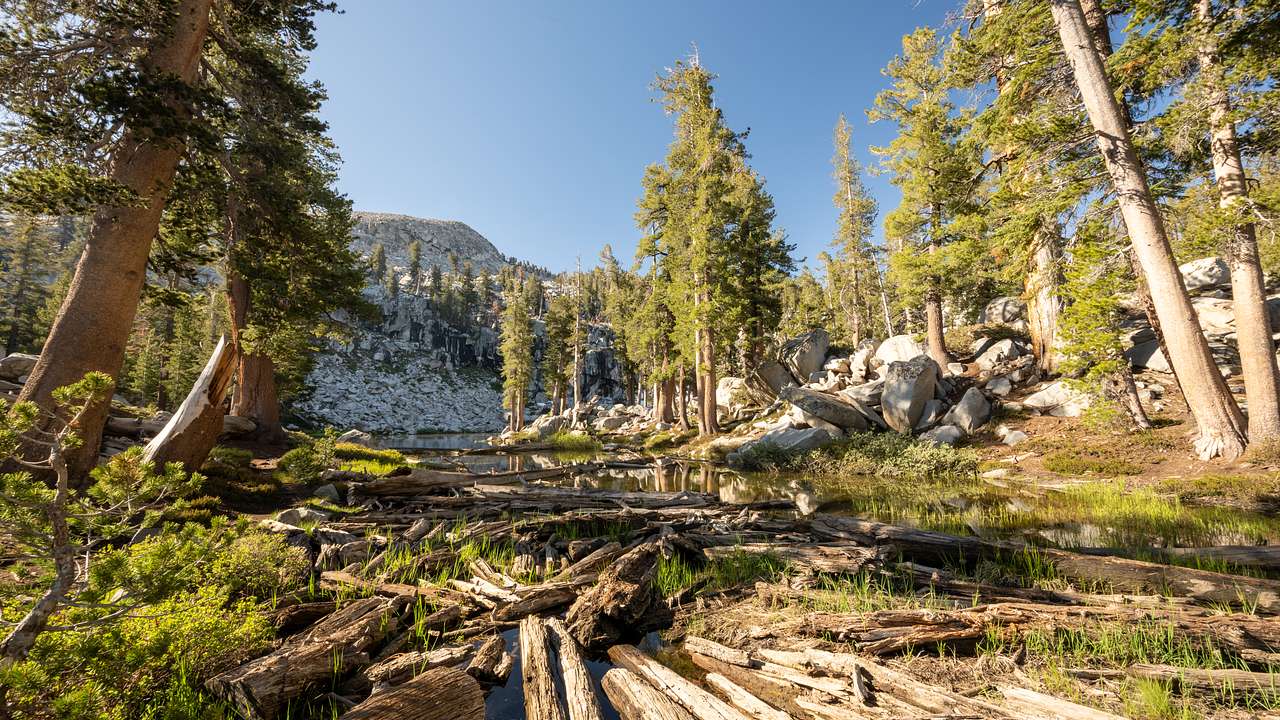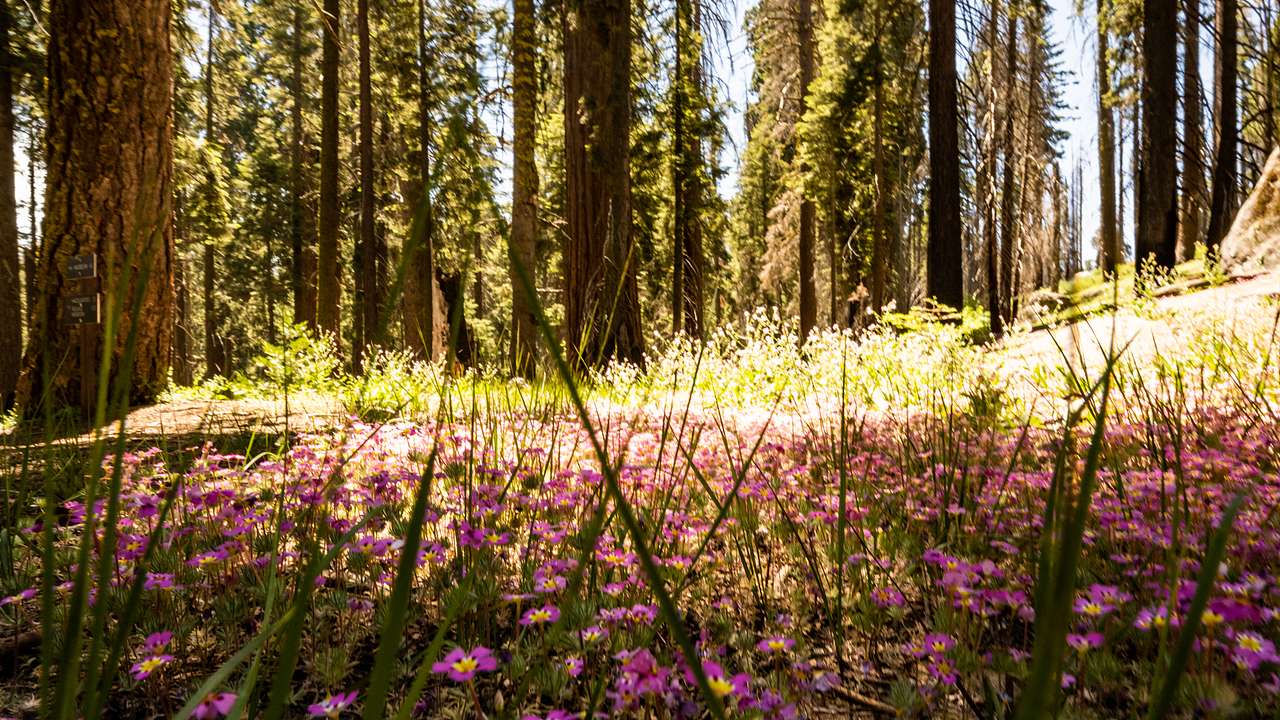Best Time to Visit Sequoia National Park
Destguides may receive commissions from purchases made through affiliate links in this article.
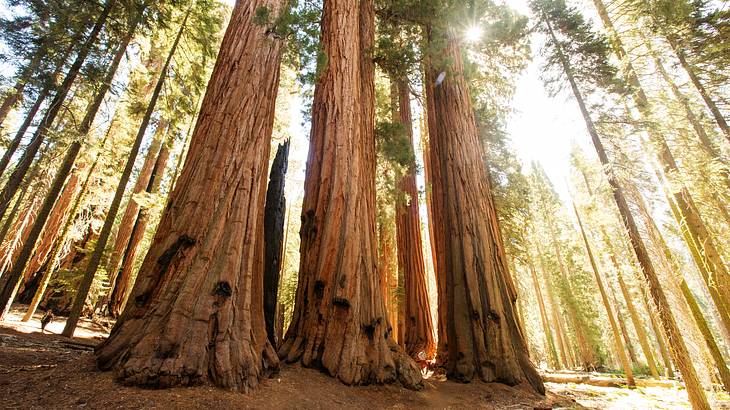
Sequoia National Park is one of the oldest and most iconic parks in the American Southwest. It was established in 1890 and is known as the "Land of Giants." The park is home to massive mountains, big sparkling lakes, and the largest trees in the world.
Nestled in the Sierra Nevada Mountains of Southern California, the park covers over 630 square miles. Over a million people visit Sequoia National Park yearly to hike, camp, ski, and marvel at the giant Sequoia trees.
The Sequoia trees for which the park was named tower over 250 feet. There are several Sequoia groves throughout the park, including the aptly named "Giant Forest," where the largest tree in the park resides. This giant Sequoia, nicknamed General Sherman, is a world record-holder at 275 feet tall and 36 feet in length.
If this park sounds like the ideal place to explore, you may be wondering when to plan a trip. Deciding when to visit Sequoia National Park can be challenging, with some areas only being open seasonally. Luckily, this guide on the best time to visit Sequoia National Park is here to help! Read on to discover the best time to organize your adventure.
Planning a last-minute trip to Sequoia National Park?
When visiting Sequoia National Park, book your entrance tickets and tours before you go. See the short list of top suggestions below.
☂️ Top tours and experiences in Sequoia National Park
Best Time to Go to Sequoia National Park
-
Sequoia National Park Vacation Planning Questions
- When is the best time to visit Sequoia National Park?
- What to do in Sequoia National Park?
- What are the best hikes in Sequoia National Park?
- How to get to Sequoia National Park?
- What is the closest airport to Sequoia National Park?
- What is the closest city to Sequoia National Park?
- Where to stay when visiting Sequoia National Park?
- What are the best places to camp in Sequoia National Park?
- When is the best time to camp in Sequoia National Park?
- How much is the Sequoia National Park entrance fee?
- What time does Sequoia National Park open?
- What are the caves in Sequoia National Park?
- What are the lakes in Sequoia National Park?
- When is the best season to visit Sequoia National Park?
-
Weather, Prices, and Crowds in Sequoia National Park
- Sequoia National Park in January
- Sequoia National Park in February
- Sequoia National Park in March
- Sequoia National Park in April
- Sequoia National Park in May
- Sequoia National Park in June
- Sequoia National Park in July
- Sequoia National Park in August
- Sequoia National Park in September
- Sequoia National Park in October
- Sequoia National Park in November
- Sequoia National Park in December
Sequoia National Park Best Time to Visit Tips Video
Check out our highlights video of Sequoia National Park best time to visit tips.
Sequoia National Park Vacation Planning Questions
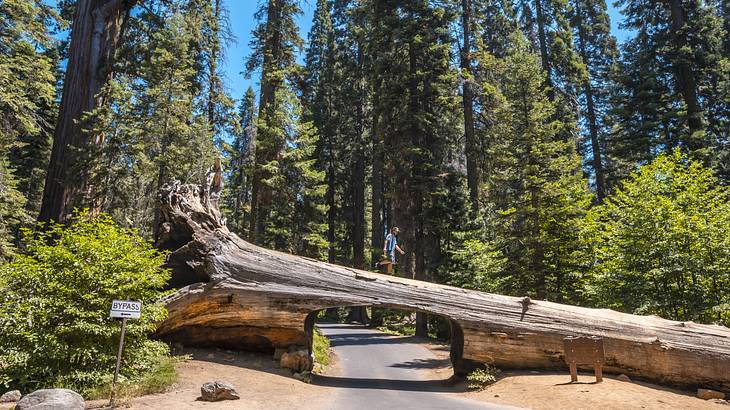
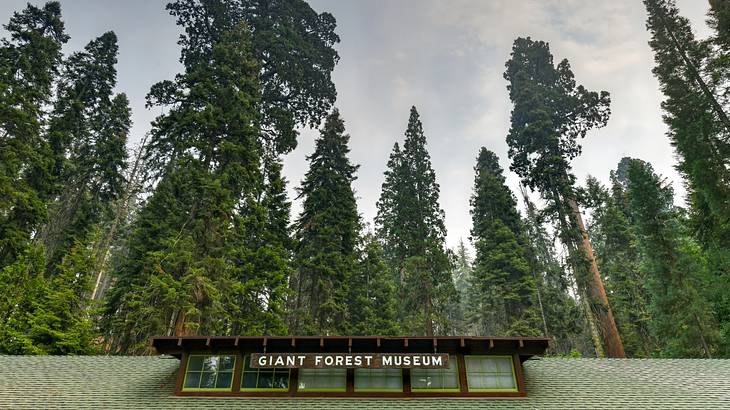
When is the best time to visit Sequoia National Park?
The best time to visit Sequoia National Park is typically from late spring (March to June) through early fall (September to December). This time of year has the best weather for outdoor activities, with little to no rain and pleasant temperatures in the 60 and 70 degrees Fahrenheit range.
The park is also most accessible during this time, with very little risk of road closures due to snow or floods. All park amenities, such as visitor centers, museums, and campgrounds, are also open.
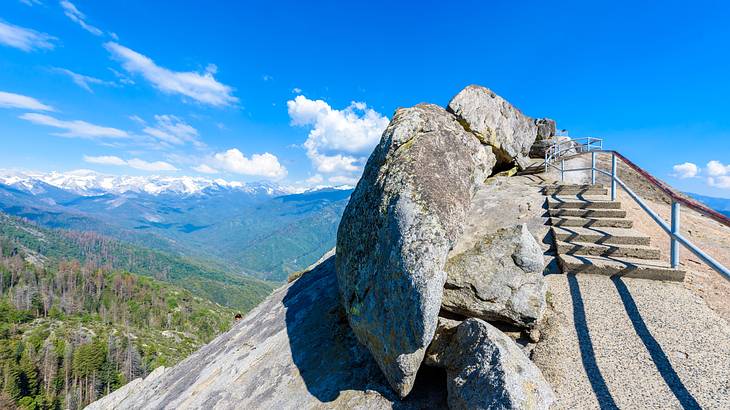
What to do in Sequoia National Park?
Sequoia National Park has no shortage of fun and exciting things to do! From hiking and visiting the famous giant Sequoia tree groves to going on scenic drives and wildlife-watching excursions.
For the more adventurous, caving and rock climbing are also available at the park. You can explore deep underground caverns or climb high up the granite walls of Moro Rock, with safety gear, of course.

What are the best hikes in Sequoia National Park?
There are hundreds of miles of hiking trails in Sequoia National Park, ranging from less than a mile to well over twenty miles. It is a hiker's paradise!
One of the most popular trails to hike is the General Sherman Tree Trail. This short hike will lead you to the world's largest tree, a massive 275-foot-high Sequoia tree nicknamed General Sherman. The General Sherman tree is arguably the most famous tree in the world and tops the list for many world records and California fun facts.
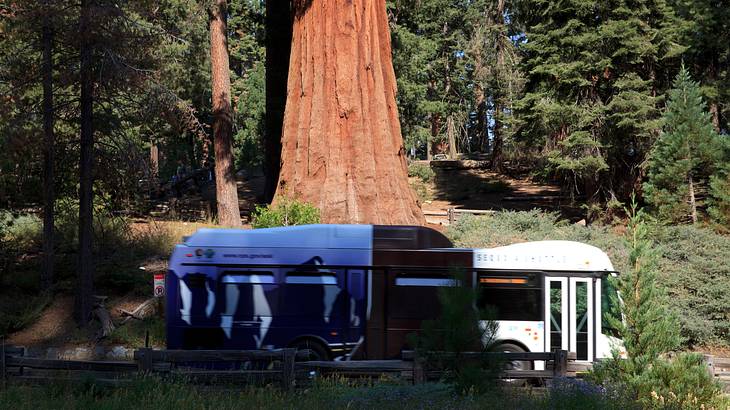
How to get to Sequoia National Park?
Sequoia National Park is located on the southern end of the Sierra Nevada mountain range in Central California. Unless you are coming from California or the surrounding states, you'll most likely want to fly into the Fresno Yosemite International Airport. From there, you can rent a car or arrange private transportation to the park. It's about a two-hour drive.
If you are traveling in the summer, there is an Amtrak route that arrives in the nearby towns of Hartford and Fresno. Bus connections from either town are available to the Sequoia Park Shuttle.
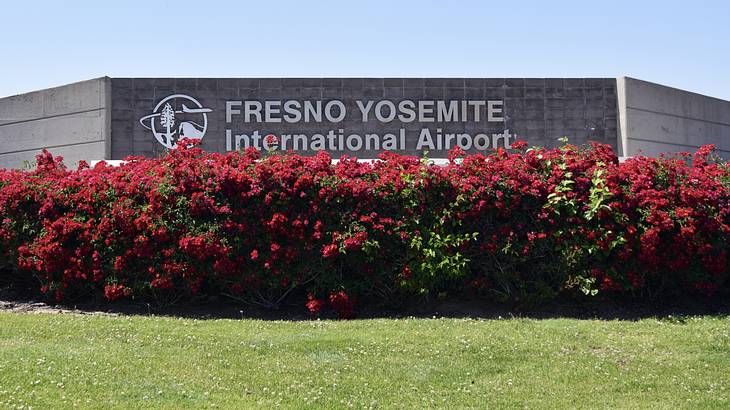
What is the closest airport to Sequoia National Park?
The closest major airport to Sequoia National Park is Fresno Yosemite International Airport. It is about a two-hour drive from the park.
The Visalia Municipal Airport is a smaller domestic airport located about an hour from the park, but it has very limited flight options. It is mainly used for short connections to Fresno and private charters.

What is the closest city to Sequoia National Park?
Visalia, California, is the closest city to Sequoia National Park. Aptly known as the "Gateway to the Sequoias," this small town rests right outside the park in the foothills of the Sierra Nevada mountains.
A vibrant tourist town, Visalia has plenty of hotels, restaurants, shops, and entertainment options for visitors to enjoy when they are not exploring the park.
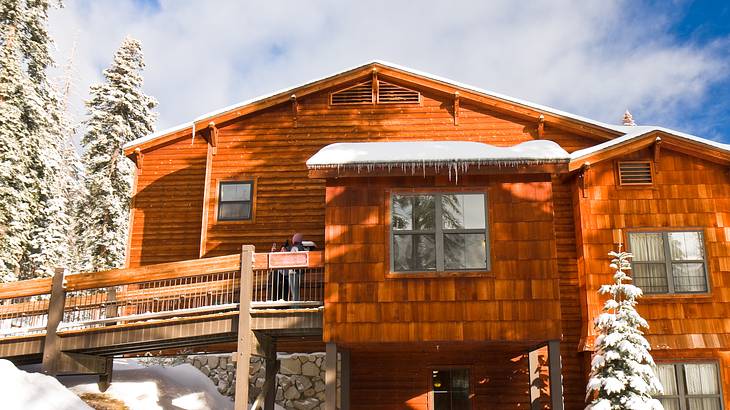
Where to stay when visiting Sequoia National Park?
There are many options for places to stay when visiting Sequoia National Park. The park operates several on-site wilderness lodges, cabins, and campgrounds.
Nearby towns, like Visalia, also have hotels to stay at. For example, you could book a room at the Wyndham or opt for the budget-friendly Holiday Inn Expresss. You can also find cozy lodges, like the Buckeye Tree Lodge and Cabins.
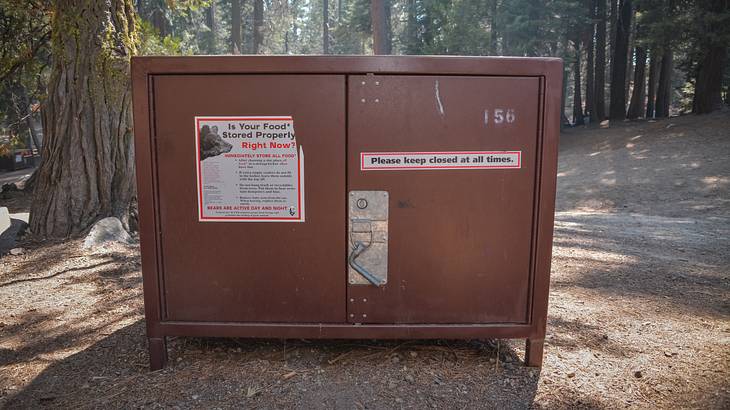
What are the best places to camp in Sequoia National Park?
Sequoia National Park has 14 campgrounds that are open from spring (March to June) through fall (September to December) and three that remain open during the winter (December to March). The most popular campground is Lodgepole Campground.
Lodgepole Campground sees the most traffic and fills up the fastest in the summer (June to September). However, if you can book a spot here, it's well worth it. This campground offers gorgeous river views and is close to Lodgepole Village, where campers can stock up at the market and access laundry facilities.
Another popular camping spot in Sequoia National Park is Stony Creek Campground. Here, campers can enjoy more secluded campsites nestled under trees and surrounded by large rocky outcroppings.
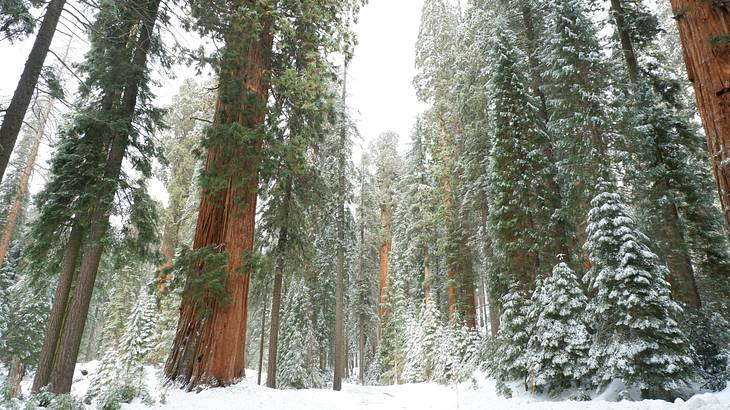
When is the best time to camp in Sequoia National Park?
The best time to travel to Sequoia National Park for camping is summer (June to September). All campgrounds and amenities are typically open in the summer months (barring any extreme weather).
Reservations for campsites tend to fill up fast in the summer months, so be sure to book ahead of time. However, for those willing to brave the cold the rest of the year, there are some campgrounds open year-round.

How much is the Sequoia National Park entrance fee?
The current entry fee for Sequoia National Park is $35 (US dollars) per vehicle. Visitors that arrive without a vehicle will pay a per-person fee of $20 (US dollars) to enter the park. Motorcycle riders will be charged $30 (US dollars), and tour groups range from $10 to $20 (US dollars), depending on the group size.
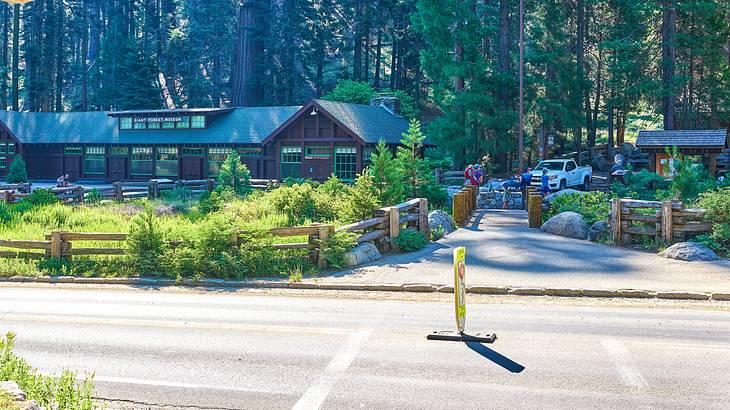
What time does Sequoia National Park open?
The park is open 24 hours a day, 365 days a year. However, visitor centers, shops, and other park amenities have varying hours of operation. Certain parts of the park, including campgrounds, are also closed from October to April due to snow.
Other severe weather may also close all or parts of the park occasionally, so it's important to check current advisories before heading there.

What are the caves in Sequoia National Park?
The main cave in Sequoia National Park is Crystal Cave, a half-mile-long marble cavern that is only accessible via guided tour. Tours must be reserved online ahead of time through the Sequoia Parks Conservancy.
Sequoia National Park is also connected with Kings Canyon National Park. Together, there are over 275 caves below these adjoined parks.
Many of these caves are inaccessible due to unstable conditions, water features, or delicate ecosystems. Those looking to explore caves can check with the ranger station upon park arrival to see which ones may be open.

What are the lakes in Sequoia National Park?
There are over 3,200 lakes and ponds across Sequoia National Park and its sister park, Kings Canyon. The most popular lake is Emerald Lake, a vast lake surrounded by lush green trees and mountainscapes that reflect in the mirror-like surface.
The aptly named Lakes Trail is one of the most popular trails in the park for lake viewing. This 12-mile trail will lead hikers through several gorgeous glacial lakes, including Emerald Lake, Pear Lake, Heather Lake, and Alta Lake.

When is the best season to visit Sequoia National Park?
Summer (June to September) is widely regarded as the best time of year to visit Sequoia National Park. This season has the most stable weather with little threat of rain or snow and comfortable hiking temperatures in the 70 to 80 degrees Fahrenheit range. Summer also has the most accessibility within the park, with most trails, facilities, and campgrounds being open.
There is a small price to pay for the great weather and accessibility. Sequoia National Park is one of the most visited National Parks on the West Coast, and Summer is peak season. Therefore, visitors should be prepared for long lines, full parking lots, and crowded trails.
Spring (March to June) is also a beautiful and often overlooked time to visit. While some areas can be quite cold and snowy, there are still plenty of opportunities for outdoor recreation at Sequoia National Park in spring. It is also much less crowded than in summer.
Weather, Prices, and Crowds in Sequoia National Park
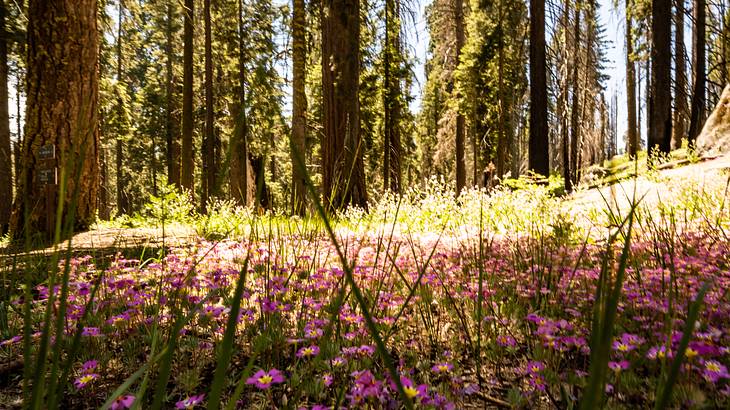
Sequoia National Park in January
January is one of the coldest and snowiest months in Sequoia National Park. Temperatures range from the 20s to 40s degrees Fahrenheit, but snowstorms and subzero temperature drops can happen.
Many roads are inaccessible or may need tire chains to drive through. In addition, most campgrounds in the park are closed. As a result, crowds are typically at their lowest in January, and hotel prices can be up to 30 percent lower than in the peak summer months.
Most visitors that travel to Sequoia National Park in January come for winter sports. Skiing is very popular. You can also book a snowshoe tour to explore the snow-covered park with a guide.
Sequoia National Park in February
February in Sequoia National Park is still quite cold, with temperatures that linger in the upper 20s to upper 40s degrees Fahrenheit range. Rain, sleet, and snow can be common in February. Many areas of the park may require tire chains to drive through, and most campgrounds remain closed.
Visitation numbers are still low in February, and hotel pricing remains lower than average. It's a good time to visit Sequoia National Park for winter sports like skiing and snowshoeing.
Sequoia National Park in March
March is a slightly warmer time to explore the park, with temperatures ranging from the 30s to 60s degrees Fahrenheit. Rain, sleet, and snow can still be expected around the park, especially in higher elevations. The lower elevations may see some snowmelt and wildflowers start to bloom.
Winter sports like skiing and snowshoeing are still accessible in higher elevations of the park. March crowds remain low to moderate, with trails in the foothills and Sequoia groves being the most popular. Hotel pricing for the area will also be in the low to moderate range.
Sequoia National Park in April
April in Sequoia National Park sees a wide range of weather conditions. From rain, snow, and sleet in the higher elevations to drier and warmer weather in the lower elevations. Temperatures can range anywhere from the 30s to 70s degrees Fahrenheit, depending on the part of the park you are in.
Visitors in April will have a wide range of activities to choose from. Some areas of the park still have plenty of snow for winter sports, such as skiing and snowshoeing. Other areas are full of blooming wildflowers and wildlife for hiking and scenic drives. As a result, crowds and hotel pricing are considered moderate in April due to the uptick in demand.
Sequoia National Park in May
Sequoia National Park really starts to warm up in May, with temperatures in the 60 to 70 degrees Fahrenheit range. There may be occasional rain, but most roads are open. May is often considered the best month to visit Sequoia National Park for hiking.
Lush greenery and blooming wildflowers throughout the foothills create near-perfect hiking conditions. May is also a great time to go on a Sequoia National Park adventure tour to visit all the park's most scenic places.
Crowds start to rise in May but not to the peak summer numbers just yet. Hotels and lodges will be priced from moderate to high. Campgrounds within the park also begin to open up in May.
Sequoia National Park in June
June in Sequoia National Park starts the peak summer season. Crowds and pricing for nearby accommodations start to rise to higher rates.
Temperatures remain mostly warm in the 70 to 80 degrees Fahrenheit range with little to no rain. All roads, park amenities, and campgrounds are open by June.
With all roads now accessible, June is the perfect time to take a Sequoia National Park self-driving audio tour. There are so many scenic driving points within the park. June is also great for hiking and exploring the Sequoia groves.
Sequoia National Park in July
July is one of the busiest months to visit the park. Crowds and hotel prices reach peak rates, especially near the Independence Day Holiday (July 4th). The weather is typically sunny and warm, with temperatures lingering in the upper 70s to lower 80s degrees Fahrenheit.
Popular July activities include hiking, biking, backpacking trips, camping, and rock climbing. Some lakes also allow swimming and water recreation. Wildlife activity is also high in the summer, with chances to spot deer and black bears throughout the park.
Sequoia National Park in August
August in Sequoia National Park is one of the warmest and most crowded months. Temperatures tend to stay in the 80s but can sometimes reach up to the 90s degrees Fahrenheit in certain parts of the park. Hikers are advised to check the forecast and bring plenty of water!
Park visitors can expect crowds around the park's most famous landmarks, campgrounds, and trails in August. Hotels and lodges are also at peak pricing and fill up fast. Hiking, biking, water recreation, and rock climbing are among the most popular things to do in August in Sequoia National Park.
Sequoia National Park in September
September sees a sharp decline in visitors as the summer vacation season ends. September can be the best month to visit Sequoia National Park for summer-like weather and activities without the crowds and high hotel prices.
The weather remains quite warm in September, with daytime temperatures in the 70s and 80s degrees Fahrenheit range. Perfect for all outdoor activities. Nights can get a bit cooler, so campers will want to be prepared. September is typically the last month when all campgrounds are open.
Sequoia National Park in October
Sequoia National Park starts to see cooler weather, fall colors, and the first snowfall in higher elevations during October. October can have a wide range of temperatures from the 40s to the 70s degrees Fahrenheit. Hiking is still possible in the lower elevations, but some trails in the upper parts of the park may become more difficult.
Vibrant fall colors are on full display in October, making it the best time to see Sequoia National Park and go for a scenic drive. It's also a great time to take a private tour of Sequoia National Park led by naturalists to get a more in-depth look at the park.
Crowds and pricing for hotels and lodges are usually moderate in October and further decrease towards the end of the month. Do note that many campgrounds and amenities close for the season by mid-October.
Sequoia National Park in November
November in Sequoia National Park sees significant temperature drops and the beginning of road closures due to weather. Temperatures range from the 30s to 60s degrees, but lower dips can occur. Rain and snow become more prevalent.
In the lower elevations, hiking trails are still accessible; just be sure to bundle up! The Sequoia groves remain open and are often even more beautiful with a light dusting of snow.
Crowds are thin in November, and hotels and lodges tend to have lower prices. Unfortunately, those looking to camp will find only a few options open at this time of year.
Sequoia National Park in December
December is one of Sequoia National Park's coldest and snowiest months. Temperatures range from the 20s to 50s degrees Fahrenheit with a mix of snow and rain. More roads start to become inaccessible or may need tire chains in December. Be sure to check current weather advisories before visiting the park.
With the exception of the week of Christmas, crowds and accommodation pricing are usually low in December. Winter camping is possible, but options are limited, and early reservations are advised. Most visitors during winter in Sequoia National Park come for skiing and snowshoeing.
In Summary
Hopefully, this guide has helped you decide when to visit Sequoia National Park. From the rugged mountain trails to the sparkling lakes and, of course, its namesake Sequoia trees, this park has so much to see and do. Unfortunately, this park is no stranger to extreme weather, so don't forget to check current advisories when planning your trip!
Give us feedback about this article
More visual stories related to this article:
Want to keep exploring?
Subscribe for discounts on tickets and hotels and our latest guides.
Thank you for subscribing
We will be in touch soon with discounts on tickets and hotels and our latest guides.
Want to keep exploring?
Subscribe for discounts on tickets and hotels and our latest guides.
Thank you for subscribing
We will be in touch soon with discounts on tickets and hotels and our latest guides.


